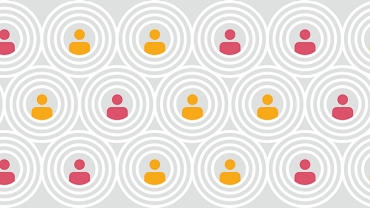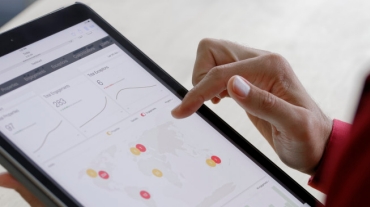PwC analysis demonstrates the potential for significant productivity, innovation and training impacts for 23m jobs globally.
Virtual reality (VR) and augmented reality (AR) have the potential to deliver a £1.4 trillion boost to the global economy by 2030.
That’s the major finding of an economic impact assessment conducted by PwC UK economists, published today in their report Seeing is Believing.
From creating new customer experiences to speeding up product development and improving workplace safety, many existing and emerging compelling uses for these technologies promise to drive growth from the current GDP contribution of £41.9 billion.
VR and AR technology will benefit all industries by creating more efficient processes, enhancing training, and offering more ways for people to collaborate and work together. The technology will also have a significant positive impact on the healthcare and retail sectors
Jeremy Dalton, Head of Virtual Reality and Augmented Reality, PwC UK says: “Businesses, the economy and society are at a crucial stage right now in the adoption of VR and AR. The technology and hardware is finally coming of age and VR and AR have the potential to provide a significant boost to the global economy, and also improve the way organisations operate, make processes faster and more effective, educate people more effectively and create incredible user experiences.”
On a country by country basis:
The US will see a boost of £484.2 billion to its economy by 2030 as a result of VR and AR, representing a 2.83% increase in GDP.
The major Asian economies of China (£165.3 billion) and Japan (£129.1 billion) will see the next biggest boost representing 2.09% and 2.00% increases in GDP respectively.
The European economies of Finland (£7 billion), Germany (£93.4 billion) and the UK (£62.5 billion) are forecast to see the biggest increases in percentage terms of GDP by 2030 with contributions of 2.64%, 2.46%, and 2.44% respectively.
Out of the two technologies, AR will continue to provide the biggest benefits to global GDP through to 2030, accounting for £985 billion of the £1.4 trillion overall.
Globally, the impact of VR and AR on employment over the next decade will be significant.
Currently, fewer than a million jobs are impacted by VR and AR and this will rise to 23 million jobs by 2030, with the biggest impact in large economies like China, the US, the UK, Germany.
The report examines specific use cases where AR and VR will boost innovation and productivity.
The healthcare sector will provide a boost of £316 billion to global GDP by 2030 through utilising the new technologies. VR is already being used to give medical students greater access to operating theatres and enables consultants based in different locations to collaborate remotely and discuss upcoming surgical procedures.
The use of VR and AR in development and training will provide a £265.2 billion boost to global GDP by 2030 supporting training where it is not always practical, or safe, to do so in the real world.
The use of VR and AR in the retail and consumer sector will provide a £184.2 billion boost to global GDP by 2030. Retailers will be able to create new customer experiences, from virtual fitting rooms for fashion stores, to AR applications that let people test how furniture would look in their home before they buy. The technologies will also help retailers better understand buyer behaviour through advanced consumer research.
Product and service development will provide a £123.5 billion boost to global GDP by 2030 through VR and AR. It will allow organisations to collaborate and work together in virtual environments, saving time and money.
Businesses need to take initiative to capitalise on VR and AR
Jeremy Dalton concludes:
“Organisations that may have struggled with seeing how VR and AR fit into their business, need only look at the multiple existing and emerging examples in the research. Now is the time for them to think about how these technologies can improve their performance or they risk being left behind."
“Organisations need to look beyond the software development stage and focus on designing the solution to solve a specific business issue - VR and AR can be used to speed up processes, improve safety, reduce costs or open up new revenue streams.
“The uptake and positive feedback of a VR or AR solution will be largely dependent on how comfortable and intuitive it is to use, so creating a seamless experience is crucial. Start small with a pilot programme to see the technology in action. Follow up by gathering feedback to direct the next step, which could be further investment or a pivot in a different direction, or a completely different path. There is no failure in being better informed.”
Notes to editors
This study provides a scenario of the impact VR and AR technology could have on the global economy by 2030, if uptake and the quality of products and services available develop as expected. For each use case identified as likely to have a significant impact on the global economy, a range of sources and techniques to estimate their productivity impact were used. Existing research on their adoption and associated productivity increases, forecasts ABI Research, and PwC economic analysis was drawn on to estimate productivity change that could occur with each use case. The figures presented are in 2019 prices. Further information on the methodology can be found in the report





















